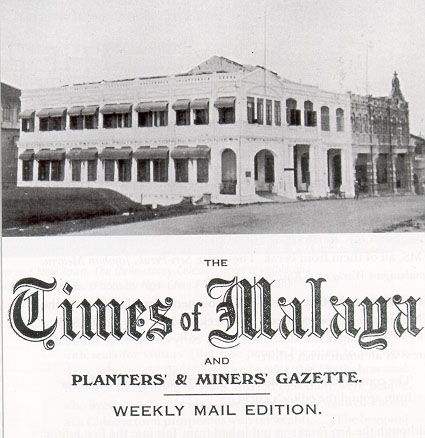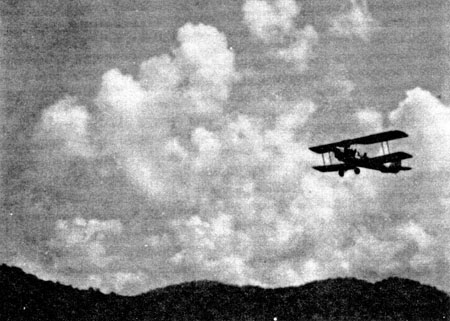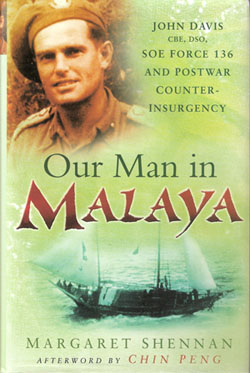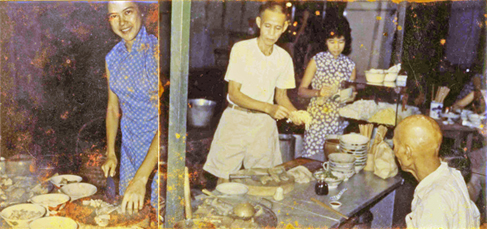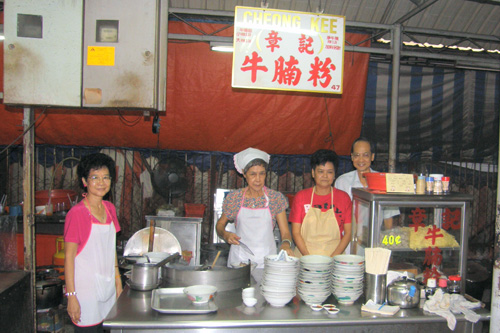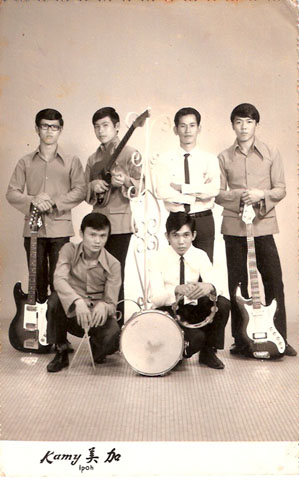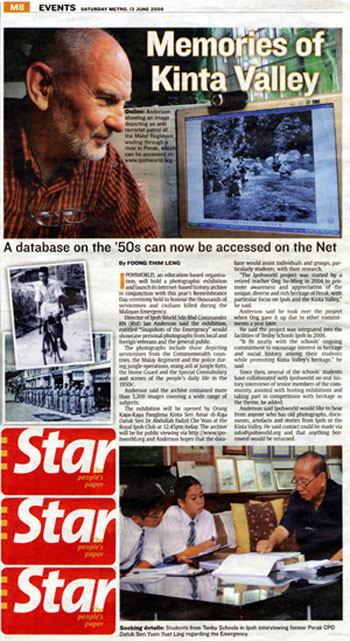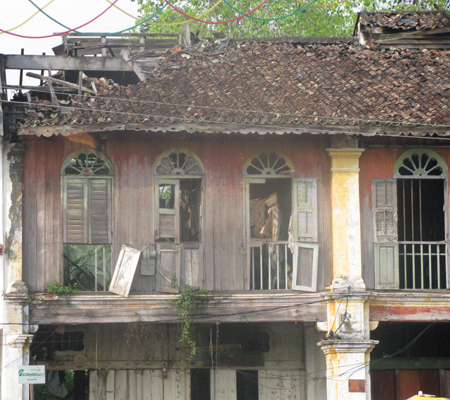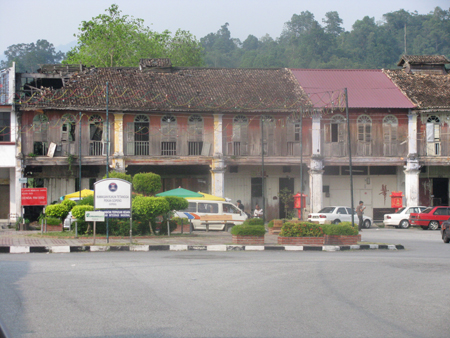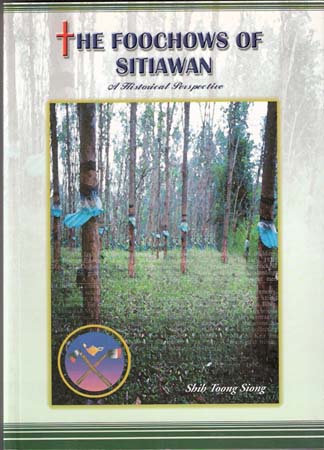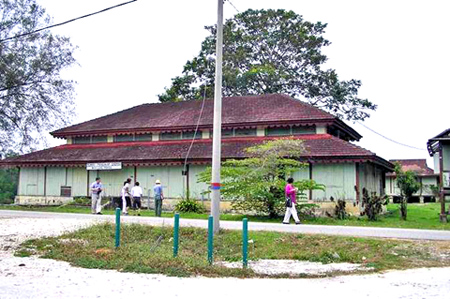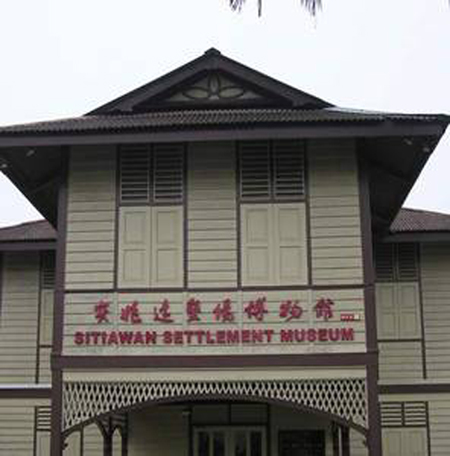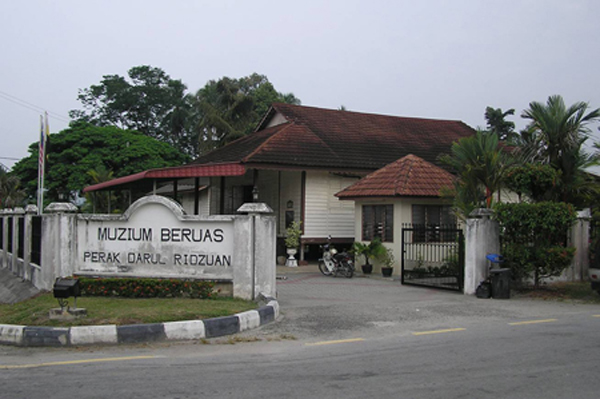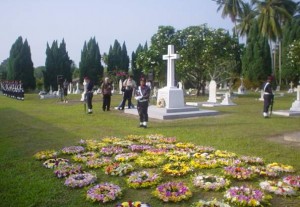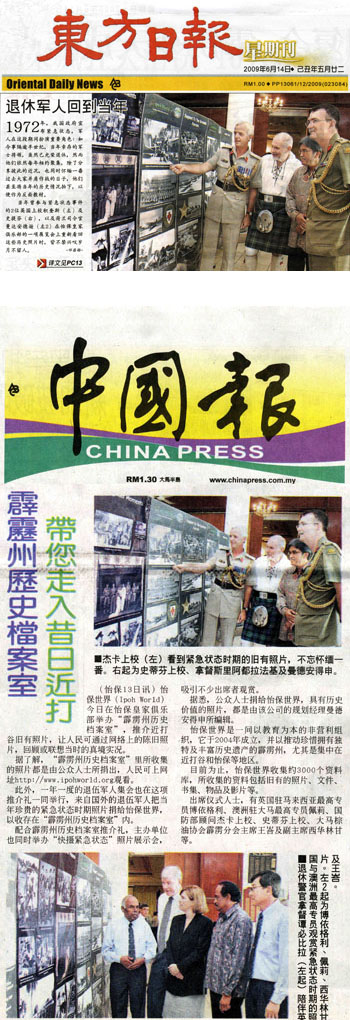
On 14 June 2009 both the China Press and Oriental Daily kindly featured the launch of ipohWorld’s new database archive and blog. The photographs show guests viewing the photographic exhibition, “Snapshots of the Emergency” that accompanied the launch. Scans of the articles are shown above and for the convenience of the all, we enclose our Press Release below:
Ipohworld, an education-based organization now integrated into the facilities of Tenby Schools Ipoh, today launched an internet-based history archive in conjunction with this year’s Remembrance Day ceremony held to honour the thousands of servicemen and civilians killed during the Malaysian Emergency (1948-1960).
This occasion was chosen as several of the veterans from the days of the Emergency had donated photographs unavailable elsewhere, to the history archive.
To mark the occasion, Ipohworld also mounted a photographic exhibition at the Royal Ipoh Club, simply called “Snapshots of the Emergency” and featuring a number of original photographs donated by the veterans who regularly attend the annual ceremony.
Orang Kaya-Kaya Panglima Kinta Seri Amar di-Raja Dato’ Seri Dr Abdullah Fadzil Che Wan, who is also the Chairman of Ipohworld, was present to launch the exhibition.
Ipohworld was established in 2004 to promote awareness and appreciation of Perak, the Silver State of Malaysia and its unique, diverse and rich heritage, with particular focus on Ipoh and the Kinta Valley. In 2006 it ran the extraordinarily successful exhibition “The Story of Ipoh: From Feet to Flight”, in cooperation with Darul Ridzuan Museum. Since then, while trying to get both the Public and Private sectors to support Ipohworld’s objective to provide Ipoh with a permanent, lively and interesting heritage gallery, to enhance education and tourism, the organisation continues to work towards that target.
Consequently, undeterred by the lack of financial support for a gallery, the project has continued to gather a broad variety of local items and information from worldwide sources. As the collection grew, disciplined recording, preservation and control became essential. Thus, an information archive in the form of a unique digital image database, supported by original research, and available information from acknowledged and credible sources, was born.
To date Ipohworld has documented well over 3000 items in the archive covering a wide range of subjects across the broad spectrum of heritage and social history, based on photographs, documents, interviews, artifacts, books and videos. More items will be added regularly.
Through this database it is hoped to assist individuals and groups, particularly students, with their research, while at the same time promoting the Kinta Valley, once vaunted the richest tin mining area in the world.
In line with present communication trends, Ipohworld, under the guidance of its Project Manager, Commandor RN (RTD) Ian Anderson, has created a weblog to publish stories, personal experiences and to highlight heritage issues as they occur around our valley. Through the weblog, they hope to facilitate discussion between their readers and encourage those with an interest in Perak to share their stories and pictures with others. They also welcome visitors to post original contributions on any aspect of heritage or social history relevant to our area to enrich the content of the blog.
In 2006, the Ipohworld project was integrated into the facilities of Tenby Schools Ipoh, which aligned neatly with the schools’ ongoing commitment to encourage interest in heritage and social history among their students while maintaining the project‘s objective to promote Kinta Valley’s heritage. Since then, all the items displayed in its maiden exhibition “From Feet to Flight” as well as new additions, have have found their “home” at Tenby Schools Ipoh, whilst continuing to wait for a permanent home.
Madam Lee Yam Sei, COO of Tenby Schools Ipoh, explained that the students’ first involvement with Ipohworld’s objectives was when they took on a project to document their own families’ transport history in 2006, taking the lead from the first exhibition.
“Since then several of the schools’ students have collaborated with Ipohworld on oral history interviews of senior members of the community, assisted with hosting exhibitions and taken part in photographic, art and model building competitions with heritage as the theme.
“Besides projects of this nature, the schools also take pride in organising trips to heritage exhibitions and sites to further expose their students to the wealth of local history that is available”, she said.
“These include such diverse subjects as tin mining, a battle site, prehistoric rock paintings, a well-known local folly, mangrove swamps and charcoal burning.
“We are proud that our students have taken a keener interest in Perak’s history and developed an appreciation for its rich cultural heritage through these activities, as a result of the efforts of Ipohworld”, Madam Lee added.
Over the last 5 years Ipohworld has been well supported with donated material from home and overseas, but if they are to build a truly comprehensive archive they need more help. If anyone has any old photographs, documents, artifacts or stories from Ipoh or the Kinta Valley area they would be delighted to hear from them.
Contact may be made via info@ipohworld.org in the first instance so that appropriate arrangements may be made. Anything borrowed will be returned promptly as existing contributors will confirm.
Ipohworld’s impressive history archives, including the most recent collection of photo exhibition “Snapshots of the Emergency”, are available for public viewing via http://www.ipohworld.org


